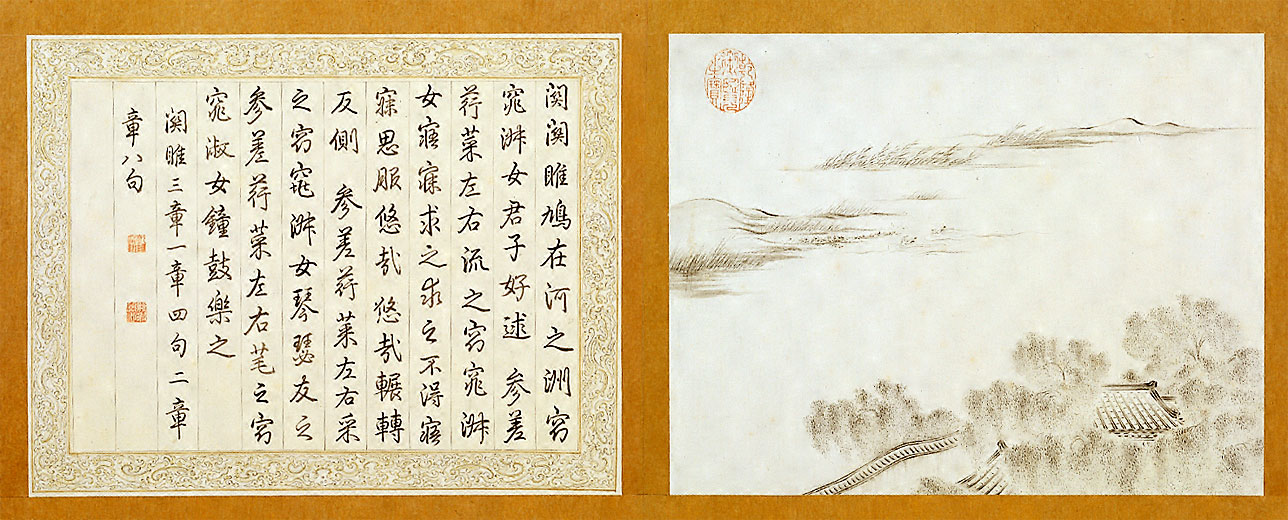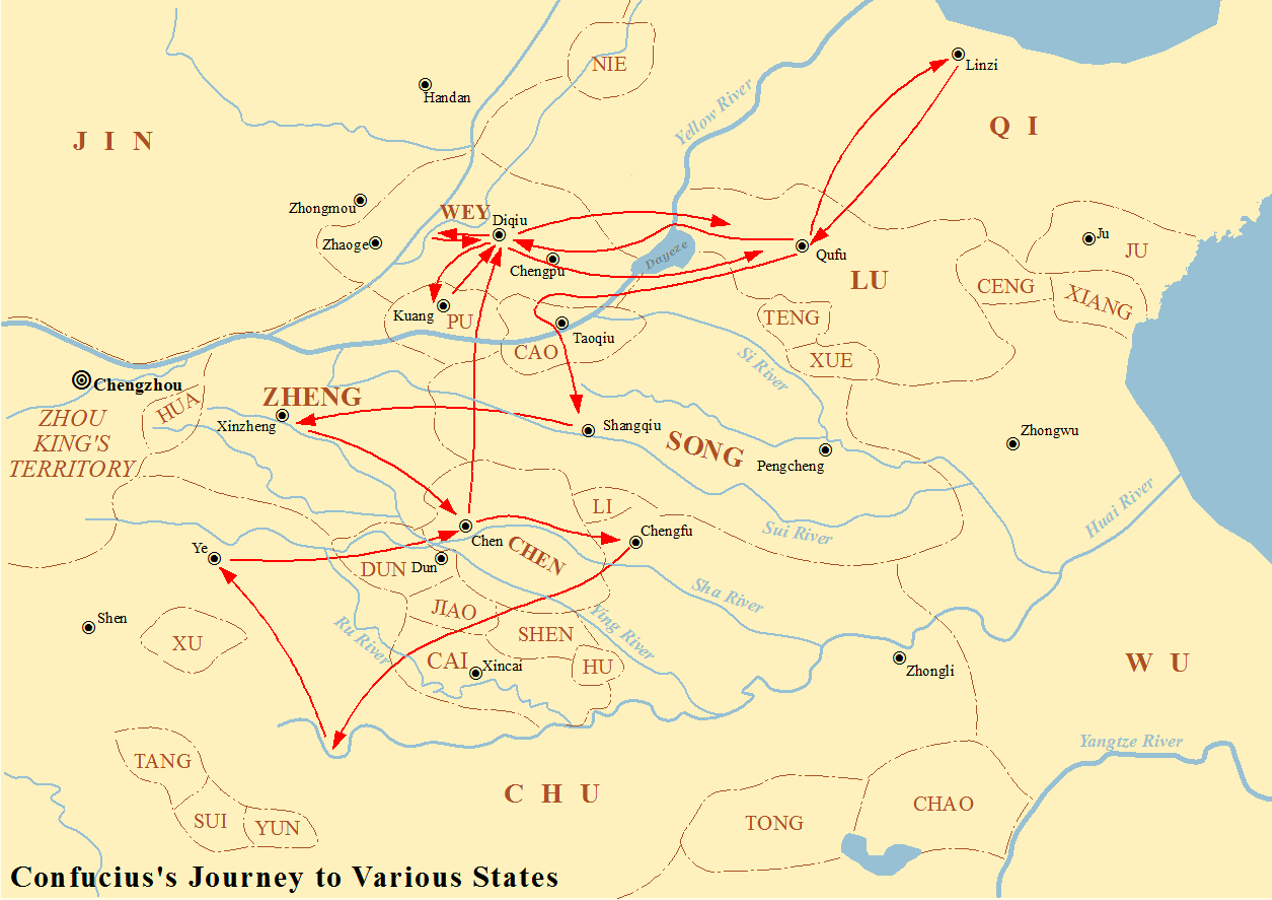|
Classical Chinese Poem
Classical Chinese poetry is traditional Chinese poetry written in Classical Chinese and typified by certain traditional forms, or modes; traditional genres; and connections with particular historical periods, such as the poetry of the Tang dynasty. The existence of classical Chinese poetry is documented at least as early as the publication of the ''Classic of Poetry'' (''Shijing''). Various combinations of forms and genres have developed over the ages. Many or most of these poetic forms were developed by the end of the Tang dynasty, in 907 CE. The use and development of Classical Chinese poetry actively continued up until the May Fourth Movement, in 1919, and is still developed even today. Poetry created during this period of more-or-less continuous development displays a great deal of diversity – categorized by both major historical periods and by dynastic periods (the traditional Chinese historical method). Another key aspect of Classical Chinese poetry is its intense int ... [...More Info...] [...Related Items...] OR: [Wikipedia] [Google] [Baidu] |
Confucius
Confucius (; pinyin: ; ; ), born Kong Qiu (), was a Chinese philosopher of the Spring and Autumn period who is traditionally considered the paragon of Chinese sages. Much of the shared cultural heritage of the Sinosphere originates in the philosophy and teachings of Confucius. His philosophical teachings, called Confucianism, emphasized personal and governmental morality, harmonious social relationships, righteousness, kindness, sincerity, and a ruler's responsibilities to lead by virtue. Confucius considered himself a transmitter for the values of Ancient China, earlier periods which he claimed had been abandoned in his time. He advocated for filial piety, endorsing strong family loyalty, Ancestor veneration in China, ancestor veneration, the respect of elders by their children and of husbands by their wives. Confucius recommended a robust family unit as the cornerstone for an ideal government. He championed the Silver Rule, or a negative form of the Golden Rule, advising, "Do ... [...More Info...] [...Related Items...] OR: [Wikipedia] [Google] [Baidu] |
Nineteen Old Poems
''Nineteen Old Poems'' () is a collection of nineteen ancient Chinese poems which were likely composed during the Han dynasty by poet-musicians inspired by the artistry of folk song Yuefu. They first appeared in the early Chinese literary anthology ''Wen Xuan'', a compilation of poetry and literature by Liang dynasty, Liang Crown Prince Xiao Tong. Modern scholarship pinpointed the time of composition to be between 140 and 190 CE during the Eastern Han dynasty, based on their narrative content, emotional expression, and mature literary techniques. The authorship of the "Nineteen Old Poems" is anonymous. However, indicators such as references to carriages, fine clothing, mansions, and upper-class entertainments—as well as allusions to the ''Classic of Poetry, Shijing''— suggest that the authors were members of the educated elite. One of the tendencies of these poems is towards a "tone of brooding melancholy." As Watson put it, the poems are "anonymous voices speaking to us from ... [...More Info...] [...Related Items...] OR: [Wikipedia] [Google] [Baidu] |
Yuefu
''Yuefu'' are Chinese poems composed in a folk song style. The term originally literally meant " Music Bureau", a reference to the imperial Chinese governmental organization(s) originally charged with collecting or writing the lyrics, later the term ''yuefu'' was applied to later literary imitations or adaptations of the Music Bureau's poems. The use of ''fu'' in ''yuefu'' is different from the other Chinese term ''fu'' that refers to a type of poetry or literature: although homonyms in English, the other '' fu'' () is a rhapsodic poetry/prose form of literature. The term ''yuefu'' covers original folk songs, court imitations and versions by known poets (such as those of Li Bai). As opposed to what appears to be more of an authentic anonymous folk verse which was collected by the Music Bureau, verse written deliberately in this style, often by known authors, is often referred to as "literary ''yuefu''". The lines of the ''yuefu'' can be of uneven length, reflecting its origins ... [...More Info...] [...Related Items...] OR: [Wikipedia] [Google] [Baidu] |
Han Poetry
Han poetry is associated with the Han dynasty era of China, 206 BC – 220 AD, including the Wang Mang interregnum (9–23 AD). Han poetry is considered a significant period in Classical Chinese poetry due to several important developments. One key aspect was the development of the quasipoetic ''fu'', a distinctive literary form. The activities of the Music Bureau, which collected popular ballads, led to the creation of what would later be known as the yuefu, ''yuefu'', a rhapsodic poetic style. Towards the end of the Han dynasty, a Jian'an poetry, new style of ''shi'' poetry emerged. As the ''yuefu'' evolved into fixed-line forms resembling ''shi'' poetry, distinguishing between the two styles became increasingly difficult. Consequently, the classification of certain poems as ''yuefu'' or ''shi'' is often somewhat arbitrary. Major works from the Han era include the compilation of the ''Chuci'' anthology, which contains some of the oldest and most important poetic verses to be p ... [...More Info...] [...Related Items...] OR: [Wikipedia] [Google] [Baidu] |
Music Bureau
The Music Bureau (Traditional Chinese character, Traditional Chinese: 樂府; Simplified Chinese character, Simplified Chinese: 乐府; Pinyin, Hanyu Pinyin: ''yuèfǔ'', and sometimes known as the "Imperial Music Bureau") served in the capacity of an organ of various imperial government bureaucracies of China: discontinuously and in various incarnations, the Music Bureau was charged directly, by the emperor (or other monarchical ruler), or indirectly, through the royal (or imperial) government to perform various tasks related to music, poetry, entertainment, or religious worship. These tasks included both musical and lyrical research and development, and also directing performances. The existence of a Music Bureau was typical of various Chinese dynasties, though the Music Bureau's prominence and influence may have peaked during the reign of Han dynasty emperor Emperor Wu of Han, Wu, who was especially interested in such activities and engaged himself accordingly. The mission of th ... [...More Info...] [...Related Items...] OR: [Wikipedia] [Google] [Baidu] |
Han Dynasty
The Han dynasty was an Dynasties of China, imperial dynasty of China (202 BC9 AD, 25–220 AD) established by Liu Bang and ruled by the House of Liu. The dynasty was preceded by the short-lived Qin dynasty (221–206 BC) and a warring interregnum known as the Chu–Han Contention (206–202 BC), and it was succeeded by the Three Kingdoms period (220–280 AD). The dynasty was briefly interrupted by the Xin dynasty (9–23 AD) established by the usurping regent Wang Mang, and is thus separated into two periods—the #Western Han (202 BC – 9 AD), Western Han (202 BC9 AD) and the #Eastern Han (25–220 AD), Eastern Han (25–220 AD). Spanning over four centuries, the Han dynasty is considered a Golden ages of China, golden age in Chinese history, and had a permanent impact on Chinese identity in later periods. The majority ethnic group of modern China refer to themselves as the "Han people" or "Han Chinese". The spoken Chinese ... [...More Info...] [...Related Items...] OR: [Wikipedia] [Google] [Baidu] |
Gushi (poetry)
''Gushi'' (), is one of the main poetry forms defined in Classical Chinese poetry, literally meaning "old (or ancient) poetry" or "old (or ancient) style poetry": ''gushi'' is a technical term for certain historically exemplary poems, together with later poetry composed in this formal style. Poetic form The normal formal style is for uniform line lengths of 5 or 7 syllables (or characters), with lines in syntactically paired couplets. Parallelism emphasizing thesis or antithesis is frequently found but is not an obligatory feature. Rhymes generally occur at the ends of couplets, the actual rhyme sound sometimes changing through the course of the poem. Caesura usually occurs as a major feature before the last 3 syllables in any line, with the 7 syllable lines also often having a minor caesura in between the first two pairs of syllables. The final 3 syllables in a line are often varied syntactically by whether the first and second of these are more closely linked by the syntax ... [...More Info...] [...Related Items...] OR: [Wikipedia] [Google] [Baidu] |
Qu Yuan
Qu Yuan ( – 278 BC) was a Chinese poet and aristocrat in the State of Chu during the Warring States period. He is known for his patriotism and contributions to classical poetry and verses, especially through the poems of the '' Chu Ci'' anthology (also known as ''The Songs of the South'' or ''Songs of Chu''): a volume of poems attributed to or considered to be inspired by his verse writing. Together with the ''Shi Jing'', the ''Chu Ci'' is one of the two greatest collections of ancient Chinese verse. He is also remembered in connection to the supposed origin of the Dragon Boat Festival. Historical details about Qu Yuan's life are few, and his authorship of many ''Chu Ci'' poems has been questioned at length. However, he is widely accepted to have written "The Lament," a ''Chu Ci'' poem. The first known reference to Qu Yuan appears in a poem written in 174 BC by Jia Yi, an official from Luoyang who was slandered by jealous officials and banished to Changsha by ... [...More Info...] [...Related Items...] OR: [Wikipedia] [Google] [Baidu] |
Li Sao
"''Li Sao''" (; translation: "Encountering Sorrow") is an ancient Chinese poem from the anthology ''Chuci'' traditionally attributed to Qu Yuan. ''Li Sao'' dates from the 3rd century BCE, during the Chinese Warring States period. Background The poem "Li Sao" is in the ''Chuci'' collection and is traditionally attributed to Qu Yuan of the Kingdom of Chu, who died about 278 BCE. Qu Yuan manifests himself in a poetic character, in the tradition of Classical Chinese poetry, contrasting with the anonymous poetic voices encountered in the ''Shijing'' and the other early poems which exist as preserved in the form of incidental incorporations into various documents of ancient miscellany. The rest of the ''Chuci'' anthology is centered on the "''Li Sao''", the purported biography of its author Qu Yuan. In "''Li Sao''", the poet despairs that he has been plotted against by evil factions at court with his resulting rejection by his lord and then recounts a series of shamanistic spirit ... [...More Info...] [...Related Items...] OR: [Wikipedia] [Google] [Baidu] |
Chu (state)
Chu (, Old Chinese: ''*s-r̥aʔ'') was an Ancient Chinese states, ancient Chinese state during the Zhou dynasty. Their first ruler was King Wu of Chu in the early 8th century BC. Chu was located in the south of the Zhou heartland and lasted during the Spring and Autumn period. At the end of the Warring States period it was annexed by the Qin (state), Qin in 223 BC during the Qin's wars of unification. Also known as Jing () and Jingchu (), Chu included most of the present-day provinces of Hubei and Hunan, along with parts of Chongqing, Guizhou, Henan, Anhui, Jiangxi, Jiangsu, Zhejiang, and Shanghai. For more than 400 years, the Chu capital Danyang (Chu), Danyang was located at the junction of the Dan River (China), Dan and Xi Rivers near present-day Xichuan County, Henan, but later moved to Ying (Chu), Ying. The house of Chu originally bore the Chinese surname#Xing, ancestral temple surname Nai ( OC: /*rneːlʔ/) which was later written as Mi (surname), Mi ( OC: /*meʔ/). Th ... [...More Info...] [...Related Items...] OR: [Wikipedia] [Google] [Baidu] |





